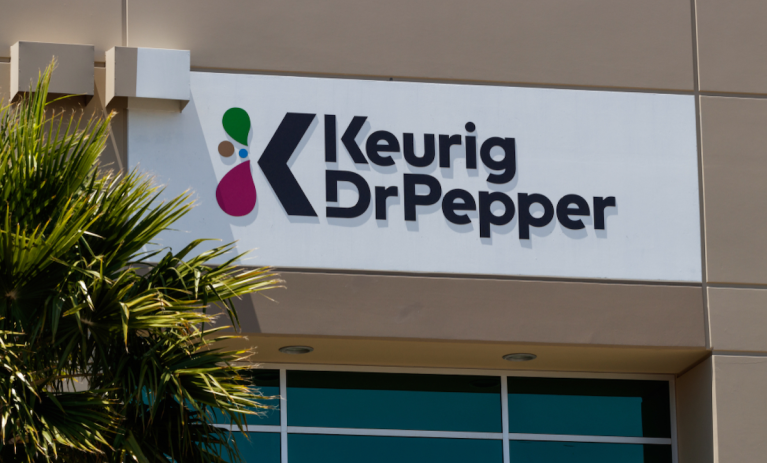
Keurig Dr Pepper (KDP) and The Coca-Cola Company are adapting to changing consumer preferences. KDP’s acquisition of Ghost underscores its strategy to expand into high-growth segments, particularly energy drinks.
During KDP’s third-quarter earnings call Thursday (Oct. 24), CEO Tim Cofer noted the importance of innovation and a long-term focus, especially as at-home coffee consumption remains subdued. Meanwhile, Coca-Cola reported a 9% increase in organic revenue despite a slight decline (decreased 1%, to $11.9 billion) in overall sales. Both companies are harnessing digital tools to enhance marketing and operational efficiency, positioning themselves to capitalize on emerging trends.
The 9% organic sales growth mark reported during Coca-Cola’s third-quarter earnings call Wednesday (Oct. 23) was notably higher than PepsiCo’s 1.3% increase in nearly identical three-month periods.
KDP is responding to a dynamic consumer landscape marked by changing preferences and evolving market conditions, Cofer said. As the company builds its 2025 strategy, it acknowledges both opportunities and risks.
“As we build our 2025 plan, we see considerable opportunity and also some risk,” Cofer said. “The operating environment remains subdued and we’re focused on controlling the controllables amid a softer consumer environment. We’re setting the stage for healthy continued financial performance beyond 2024.”
A big part of Cofer’s optimism for 2025 is the acquisition of Ghost, whose net sales have more than quadrupled in the past three years, with Ghost Energy one of the fastest-growing brands in the energy drink category. According to the agreement, KDP will initially purchase a 60% stake in Ghost, followed by the acquisition of the remaining 40% stake in 2028.
The acquisition shows KDP’s commitment to expanding its footprint in attractive categories.
“This morning’s exciting announcement of our acquisition of GHOST is yet another step, accelerating our portfolio evolution toward growth-accretive and consumer-preferred spaces,” Cofer said. “GHOST is young and versatile and founder-led, with significant potential to further scale. These beverages satisfy a near-universal consumer need for energy and alertness, increasingly relevant in a world filled with demands on our time and attention. We see significant potential to further scale GHOST, which complements KDP’s existing energy drink portfolio.”
During the third quarter, KDP reported a 2.3% increase in net sales, to $3.9 billion, primarily driven by a 3.5% growth in volume and mix. Its U.S. coffee segment, however, faced challenges, with net sales declining 3.6%, to $1 billion, despite a modest 2.7% increase in volume. Cofer said at-home coffee consumption remains muted, prompting a cautious yet strategic approach to the segment. KDP is focusing on the long game, prioritizing single-serve offerings that continue to outperform the broader coffee market.
For Coca-Cola, CEO James Quincey said, “Our business continues to demonstrate resilience in the face of a dynamic external environment. … We are encouraged by our year-to-date performance and our system’s ability to manage near-term challenges while also remaining focused on long-term growth opportunities. We were not as happy as we could have been in the third quarter with volume, and we focused on adapting quickly and saw improvements through the quarter.”
While “there’s clearly part of the consumer landscape where there’s pressure on disposable income,” Quincey added, “I would say there is some softness in aggregate, but it’s very marginal. The beverage industry is still pretty robust.”
Coca-Cola’s performance reflects strong price/mix dynamics, driven by a 10% price increase. Quincey acknowledged a move toward affordability and value in consumer preferences. The company is also focusing on digital transformation, leveraging artificial intelligence (AI) and machine learning to improve marketing and operational efficiency through personalized ads and pricing tools. Despite facing regional challenges, particularly in Europe and Asia, Coca-Cola is committed to adapting to local market needs by ensuring affordability and improving distribution.
Looking ahead, Quincey remains optimistic about achieving growth targets.
“I largely believe that it’s within our control to return to growth,” he said. “It’s firmly about getting our flywheel of marketing innovation, the price pack, and the execution of the system to get back to growth, which is very much implicit in our algorithm and our expectations going forward through the fourth quarter into 2025.”